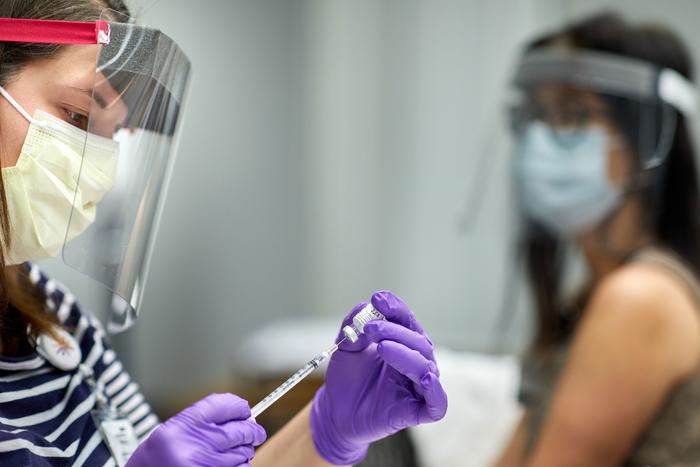Discovery of Unique Fat Tissue May Enhance Longevity and Sustain Exercise Performance in Aging Individuals
Rutgers Health researchers have unveiled significant findings regarding brown adipose tissue that could revolutionize how we maintain physical fitness as we age. Their latest research, published in the esteemed journal Aging Cell, uncovers a remarkable connection between a gene’s absence and the development of an enhanced form of brown fat that not only prolongs lifespan […]


Rutgers Health researchers have unveiled significant findings regarding brown adipose tissue that could revolutionize how we maintain physical fitness as we age. Their latest research, published in the esteemed journal Aging Cell, uncovers a remarkable connection between a gene’s absence and the development of an enhanced form of brown fat that not only prolongs lifespan but also boosts exercise capacity by an astonishing 30%. This groundbreaking work, spearheaded by a dedicated team from Rutgers New Jersey Medical School, may eventually lead to pharmaceutical interventions that mimic these effects in human populations.
The study is centered on genetically modified mice that lack a specific protein, known as RGS14. These mice exhibited an impressive increase in active brown fat, resulting in enhanced exercise performance compared to their normally genetically endowed counterparts. The ramifications of such discoveries cannot be overstated. As humanity grapples with the challenges of aging, this research provides a tantalizing glimpse into a future where we might be able to counteract the physical decline commonly associated with advanced age.
Aging is often marked by a decrease in exercise capacity, leading to a cascade of health problems that range from cardiovascular issues to metabolic disorders. Stephen Vatner, the lead researcher and a distinguished professor at Rutgers, emphasizes the significance of these findings. He states that if therapeutic strategies can be developed to amplify exercise performance, they could serve as a vital tool in promoting healthier aging. The implications extend beyond mere physical activity; they promise to enhance overall quality of life in the later stages of human existence.
Brown fat is fundamentally different from its white counterpart. While white fat serves primarily as an energy storage system, brown fat has a unique capability — it burns calories and plays an integral role in thermoregulation. This unique functionality positions brown adipose tissue as a pivotal player not only in body weight management but also in maintaining an active lifestyle. This research suggests that brown fat also facilitates better blood flow during exercise, enhancing muscle performance and recovery.
The findings lie at the intersection of genetics and physical health. The researchers observed that the engineered mice could run faster and longer before succumbing to fatigue, demonstrating a notable increase in their endurance levels. This discovery underscores the potential for innovative treatments designed to boost brown fat function in humans, particularly as exercise becomes more challenging with age. The idea that we might one day harness the power of brown fat through targeted biochemical agents is tantalizing and could represent a significant leap forward in geriatric health care.
Moreover, the study revealed that these mice not only excelled in physical performance but also lived approximately 20% longer than their unmodified littermates. Interestingly, female mice showed a greater longevity advantage than their male counterparts, echoing patterns observed in human demographics, where women generally outlive men. These findings open avenues for exploring sex-specific mechanisms in aging and how they could be compensated for in therapeutic contexts.
As the research team delves deeper, they aim to synthesize a pharmaceutical agent that emulates the heightened benefits of brown fat, focusing on specific traits like improved metabolism and exercise capacity. Rather than formulating a broad-spectrum treatment for aging, they seek to leverage their findings by isolating and enhancing distinct biological processes, thereby streamlining the development of effective interventions.
The phenomenon of enhanced exercise performance stemming from brown fat is not merely a curious observation; it has profound implications for preventing diseases linked to aging, such as obesity, type 2 diabetes, cardiovascular conditions, and even neurodegenerative diseases like Alzheimer’s. Previous research points to brown fat’s protective qualities against these ailments, reinforcing the idea that fortifying or increasing this tissue may bolster our defenses as we age.
While the quest for a medication that can facilitate brown fat augmentation is underway, Vatner points out the potential for more immediate lifestyle adjustments as well. Current practices, including deliberate cold exposure, have shown promise in activating brown fat naturally, spurring increases in metabolic rate and enhancing immune response. These methods, while beneficial, do pose certain discomforts that many might shy away from, leading to a clear consumer preference for pharmacological solutions.
As enthusiastic as researchers are about the implications of this study, the road to practical application is fraught with challenges, including regulatory hurdles that accompany the introduction of new treatments. Vatner and his team are acutely aware that they must navigate these complexities while ensuring their findings can be translated into real-world benefits for aging populations.
In anticipation of the upcoming clinical trials, Vatner remains hopeful that within a year or so, they will have developed a drug suitable for testing. The objective is not just to extend life but to amplify the quality of life during those extended years, moving beyond mere survival to vibrant, active living.
In summary, the findings regarding brown adipose tissue lay a potential roadmap for advancing our understanding of how to promote healthful aging. By exploring the intricate genetic mechanisms governing this unique fat tissue, researchers are poised to pioneer new therapeutic strategies that could fundamentally change how we view exercise, physical fitness, and aging.
Subject of Research: Animals
Article Title: Brown adipose tissue enhances exercise performance and healthful longevity
News Publication Date: 18-Dec-2024
Web References: DOI
References:
Image Credits:
Keywords: Brown adipose tissue, Exercise performance, Healthful aging, Longevity, Metabolism, Physiological research, Rutgers University.
Tags: aging and exercise performancebrown adipose tissue researchcombating age-related declineenhanced brown fat developmentexercise capacity improvementgenetic modification in miceimplications of aging researchlongevity and healthpharmaceutical interventions for agingphysical fitness in older adultsRGS14 protein absenceRutgers Health findings
What's Your Reaction?


































